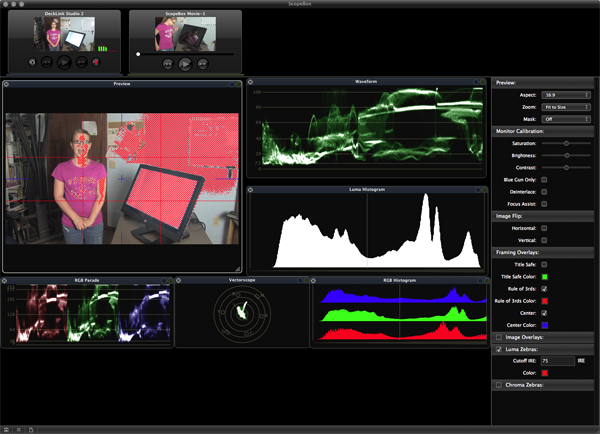Review: Divergent Media ScopeBox 3.0
For scopes and DVR functionality, Divergent's ScopeBox 3.0 outdoes Adobe's late, lamented OnLocation, particularly because it works with a range of cameras, not just those with FireWire outputs. If you've been wondering what you were going to do for DVR/scope functionality on the Mac now that Adobe has exited the market, you should definitely give ScopeBox a try.
When Adobe decided to drop OnLocation from Creative Suite Production Premium in version 6, it left a big gap for many producers who used the product for its scopes or DVR functionality. Fortunately for Mac producers at least, Divergent Media's ScopeBox ($99.99) more than fills the breach. While ScopeBox doesn't provide much of the logging and suite integration available in OnLocation, it more than makes up for it by providing capture card compatibility, including useful features, and—to paraphrase Woody Allen's thoughts on success—continuing to show up.
The ScopeBox interface is a blank palette into which you can load as many scopes as you'd like. You can see the preview window on the left with the rule of thirds guides running, plus more scopes than I typically use. The two small player windows on top control the source camera (on the left in Figure 1, below) and a player window (on the right in Figure 1, below).

Figure 1. Scopebox, fully loaded.
Unlike OnLocation, which could interface only with FireWire-connected cameras, Scopebox works with any QuickTime-supported capture device. I tested using a BlackMagic Decklink card connected to my Canon XH A1 via component video and XLR audio. ScopeBox's broad-based compatibility is a critical feature, as fewer and fewer cameras support FireWire.
With all scopes and other windows, you click the window to open the relevant configuration controls on the far right; in Figure 1 you can see the controls for the preview window. Once you have the scopes and preview window configured to your liking, you can save it as a custom layout—a great convenience.
Divergent's marketing materials break the product's features into three areas: monitoring, scopes, and recording. That seems like a good structure for this review, so I'll use that as well, starting with monitoring.